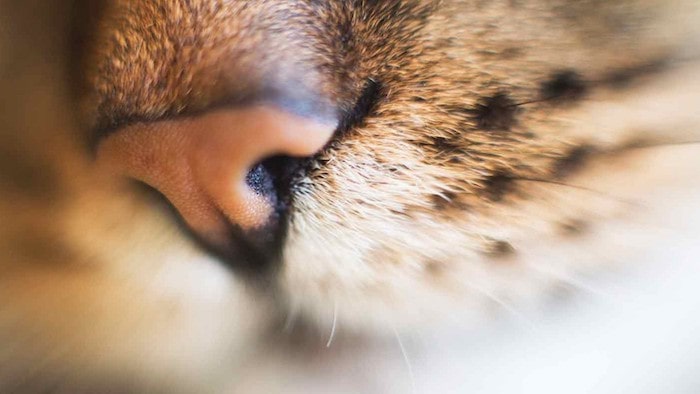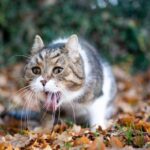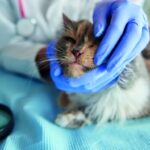As pet owners, we often find ourselves observing every little detail about our beloved feline companions, and one such detail that can raise questions is the presence of black stuff on their noses. Is it something to be concerned about? Is it normal?
In this article, we will delve into the world of cat health to shed light on this mysterious phenomenon. Whether you’re a seasoned cat owner or a new kitten parent, join us as we uncover the secrets behind the black stuff on your cat’s nose and provide valuable insights on how to best care for your furry friend’s well-being.
Let’s embark on this educational journey together and unravel the mysteries that lie beneath those adorable whiskers!
What is the black stuff on your cat’s nose and why you should care
The black stuff on your cat’s nose is usually caused by one of three things: boogers, mucous nasal discharge from dust, or scabs. Boogers are dried mucus that accumulates in the nostrils and can be easily wiped away with a damp cloth.
Mucous nasal discharge from dust is a normal reaction to environmental irritants that can make your cat sneeze and produce clear or yellowish fluid from the nose. Scabs are crusty patches of dried blood or skin that form over wounds or scratches on the nose.
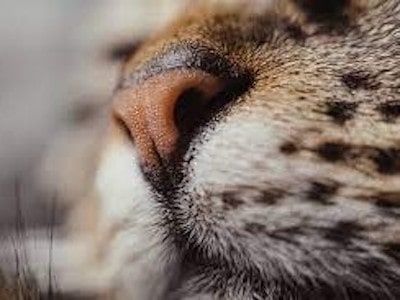
None of these causes are usually a reason to worry, as they are either harmless or easily treatable. However, sometimes the black stuff on your cat’s nose can indicate a more serious problem, such as a bacterial infection, a fungal infection, a viral infection, a tumor, or a skin condition.
These conditions can cause other symptoms, such as nasal congestion, sneezing, coughing, breathing difficulties, fever, swelling, pain, or loss of appetite. If you notice any of these signs in your cat, you should take them to the vet as soon as possible for diagnosis and treatment.
Causes of the Black Stuff on a Cat’s Nose
The black stuff on a cat’s nose can have different causes. Some of them are harmless and easy to remove, while others may indicate a health problem that requires veterinary attention.
Here are some of the possible factors that can lead to the formation of the black stuff:
1) Boogers: Boogers are dried nasal mucus that can accumulate around the nostrils and eyes of cats. They are a natural and normal process that helps protect the respiratory system from dust, allergens, and germs. Boogers can be easily wiped away with a damp cloth or cotton ball. However, if they are excessive, frequent, or accompanied by other symptoms, they may indicate an infection or irritation in the airway.
2) Dirt: Dirt is another common cause of the black stuff on a cat’s nose. Cats are curious and adventurous animals that like to explore their surroundings. Sometimes, they may get their noses dirty from playing with toys, digging in the soil, or rubbing against objects.
Dirt can be removed by gently washing the nose with warm water and soap. However, if the dirt is persistent or hard to remove, it may be a sign of a foreign object stuck in the nose that needs to be removed by a vet.
3) Scabs: Scabs are dried blood or skin that form over wounds or scratches on the nose. They are part of the healing process and usually fall off on their own. Scabs can be caused by various reasons, such as injuries, fights, allergies, parasites, or sunburns. Scabs should not be picked or scratched, as they may cause bleeding or infection. However, if they are large, inflamed, or infected, they may need to be treated by a vet.
4) Bacteria: Bacteria are microscopic organisms that can cause infections in the nose. They can enter the nose through wounds, scratches, or inhalation. Bacteria can cause inflammation, discharge, bleeding, or crusts in the nose. Bacterial infections can be treated with antibiotics prescribed by a vet. However, if left untreated, they can spread to other parts of the body and cause serious complications.
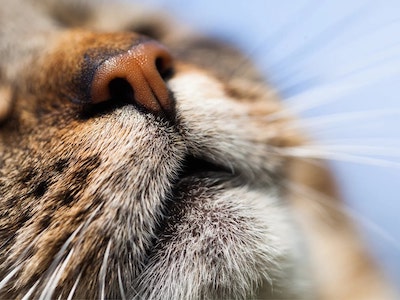
5) Fungus: Fungus is another type of microorganism that can cause infections in the nose. Fungus can grow in moist and warm environments, such as the nasal cavity. Fungus can cause symptoms similar to bacteria, such as inflammation, discharge, bleeding, or crusts in the nose.
Fungal infections can be treated with antifungal medications prescribed by a vet. However, if left untreated, they can also spread to other parts of the body and cause serious complications.
6) Allergies: Allergies are hypersensitive reactions to certain substances that trigger the immune system. Allergies can affect the nose and cause symptoms such as sneezing, itching, swelling, or discharge. Allergies can be caused by various factors, such as pollen, dust mites, mold, food, or chemicals.
Allergies can be managed by avoiding the allergens or using antihistamines prescribed by a vet. However, if severe or chronic, they may need to be treated with immunotherapy or steroids.
7) Parasites: Parasites are living organisms that feed on other organisms. Parasites can infect the nose and cause symptoms such as itching, scratching, inflammation, discharge, or scabs. Parasites can be transmitted by contact with other infected animals or contaminated environments.
Parasites can be eliminated by using dewormers or insecticides prescribed by a vet. However, if left untreated, they can also cause anemia, weight loss, or organ damage.
8) Lentigo simplex: Lentigo simplex is a benign condition that causes dark spots on the skin of cats. It is more common in orange, tortoiseshell, calico, yellow, flame, and gray tabby cats. It is caused by an increase in the number of pigment-producing cells.
Lentigo simplex does not cause any symptoms or health problems and does not need any treatment. However, it should be distinguished from malignant melanoma, a type of skin cancer that can also cause dark spots on the skin of cats.
9) Feline herpes: Feline herpes is a viral infection that affects the respiratory system of cats. It is highly contagious and can be spread by contact with other infected cats or their secretions. Feline herpes can cause symptoms such as sneezing, coughing, fever, discharge, or ulcers in the nose and eyes.
Feline herpes can be treated with antiviral medications prescribed by a vet. However, there is no cure for the virus and it can remain dormant in the body and cause recurrent outbreaks.
Symptoms and Diagnosis of the Black Stuff on a Cat’s Nose
The black stuff on your cat’s nose can have different signs and indicators depending on the cause and severity of the condition. Some of them are:
- Discoloration or darkening of the nose: The most obvious symptom is that your cat’s nose changes color from its normal pink or brown hue to a darker shade of black or brown. The color change may be gradual or sudden, partial or complete.
- Dryness or flakiness of the nose skin: The skin on your cat’s nose may become dry or flaky due to dehydration or lack of moisture. The skin may also peel off or crack easily.
- Crustiness or scabbing of the nose: The skin on your cat’s nose may form a hard layer of crust or scab due to dried blood, pus, mucus, dirt, or dead skin cells. The crust may be thick or thin, smooth or rough.
- Bleeding or discharge from the nose: The skin on your cat’s nose may bleed due to injury or infection. The blood may ooze out or drip from the nostrils. The nose may also secrete pus or mucus due to inflammation or infection. The discharge may be clear or cloudy, yellow or green.
- Sneezing or nasal congestion: Your cat may sneeze frequently due to irritation or inflammation of the nasal passages. They may also have difficulty breathing through their nose due to blockage by crusts, scabs, discharge, or parasites.
- Itching or irritation of the nose: Your cat may scratch, rub, or lick their nose excessively due to itching or discomfort. They may also show signs of pain or sensitivity when you touch their nose.
- Loss of appetite or weight: Your cat may lose their appetite or weight due to pain, discomfort, or infection in their nose. They may also have trouble smelling or tasting their food due to nasal congestion or discharge.
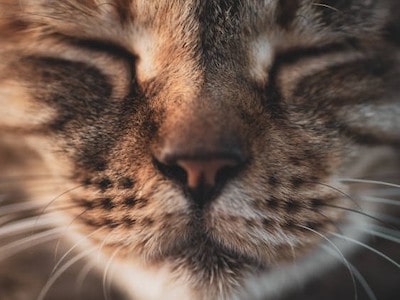
If you notice any of these symptoms in your cat, you should examine and test their nose for the condition. You can do this by:
- Visually inspecting the nose and surrounding areas: Look closely at your cat’s nose and check for any changes in color, texture, shape, or size. Also look for any signs of injury, infection, parasites, or fungal growth on the nose or nearby areas, such as the eyes, ears, mouth, or chin.
- Gently wiping or scraping off the black stuff with a damp cloth or cotton swab: Use a soft and clean cloth or swab moistened with warm water to gently wipe or scrape off the black stuff from your cat’s nose. Be careful not to hurt or irritate your cat’s nose further. You can also use a mild soap or shampoo to help loosen the black stuff, but make sure to rinse it off thoroughly afterwards.
- Taking a sample of the black stuff to a veterinarian for analysis: If you are not sure what the black stuff is or what causes it, you can collect a small sample of it and take it to a veterinarian for examination. The veterinarian can use a microscope, culture, or biopsy to identify the nature and source of the black stuff and diagnose the condition.
Treatment and Prevention of the Black Stuff on a Cat’s Nose
The treatment and prevention of the black stuff on your cat’s nose depend on the cause and severity of the condition. Some of the effective and safe ways to treat and prevent it are:
- Cleaning and moisturizing the nose regularly with mild products: Every day, you can gently clean your cat’s nose by using a clean, soft cloth or cotton swab that has been soaked with warm water. To help remove any debris, crusts, scabs, or discharge from the nose, you can also use a mild soap or shampoo. Just be sure to fully rinse it out afterward. After cleaning, you can also lightly coat your cat’s nose with petroleum jelly, coconut oil, or olive oil to help hydrate and shield it from drying out and splitting.
- Applying topical creams or ointments prescribed by a veterinarian: If your cat has an infection, inflammation, allergy, or fungal growth on their nose, you can apply a topical cream or ointment prescribed by your veterinarian to help treat it. Follow the instructions carefully and do not use any products that are not meant for cats or that may cause irritation or allergic reactions.
- Administering oral medications or supplements as directed by a veterinarian: If your cat has a hormonal imbalance, parasite infestation, or other systemic disorder that affects their nose, you can administer oral medications or supplements as directed by your veterinarian to help treat it. Make sure to give the correct dosage and frequency and monitor your cat for any side effects or adverse reactions.
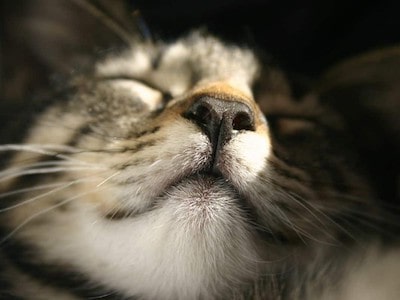
- Eliminating or avoiding potential allergens or irritants in your cat’s environment: You can try to identify and eliminate or avoid any substances that may cause allergies or irritation in your cat’s nose, such as food ingredients, bedding materials, litter types, toys, plants, chemicals, smoke, dust, etc. You can also use air purifiers, humidifiers, dehumidifiers, fans, heaters, coolers, etc. to help improve the air quality and temperature in your cat’s environment.
- Providing a balanced and nutritious diet for your cat: You can provide your cat with a balanced and nutritious diet that meets their needs and preferences. You can also consult your veterinarian for any dietary recommendations or restrictions based on your cat’s condition. You can also provide your cat with fresh water at all times to help keep them hydrated and healthy.
- Monitoring your cat’s health and behavior for any changes or complications: You can keep an eye on your cat’s health and behavior and check for any changes or complications in their nose condition. You can also take your cat to regular veterinary check-ups and vaccinations to help prevent any diseases or infections that may affect their nose.
FAQ
Is it normal for cats to have black stuff on their noses?
Yes, it is generally normal for cats to have black stuff on their noses. The presence of melanin pigmentation can give a cat’s nose a black or dark appearance. However, if you notice any unusual changes or accompanying symptoms, it’s advisable to consult a veterinarian to rule out any underlying health issues.
Are certain cat breeds more prone to having black stuff on their noses?
No specific cat breed is more prone to having black stuff on their noses. The presence of melanin pigmentation is a normal variation across different cat breeds and individual cats. However, certain breeds with darker or more prominent nose pigment may have more noticeable black stuff.
Does age play a role in the presence of black stuff on a cat’s nose?
Age itself does not directly influence the presence of black stuff on a cat’s nose. However, as cats age, they may develop other health conditions that can manifest as changes in the nose, such as hyperpigmentation or growths. Regular veterinary check-ups can help identify any age-related concerns.
Is it possible for the black stuff on my cat’s nose to be a form of skin cancer?
While it’s rare, certain types of skin cancer in cats can present as dark pigmentation or growths on the nose. If you notice any suspicious changes, such as sudden or rapid growth, ulceration, bleeding, or a loss of fur in the affected area, it’s vital to have your cat examined by a veterinarian for proper diagnosis and treatment.
Final Thoughts
In conclusion, the presence of black stuff on your cat’s nose is usually a harmless occurrence, attributed to the natural pigment called melanin. It is a common phenomenon seen in cats of various breeds and ages. While it is generally normal, it’s important to stay observant and monitor any changes in color, texture, or accompanying symptoms.
While most cases of black stuff on a cat’s nose do not indicate a health problem, it’s crucial to seek veterinary attention if you notice unusual changes, such as swelling, discharge, or behavioral abnormalities. A veterinarian can provide a proper diagnosis and recommend the necessary steps for your cat’s well-being.
Remember, cats are self-grooming animals, and they typically take care of keeping their noses clean. However, if you feel the need to clean the black stuff off your cat’s nose, consult with a veterinarian to ensure safe and appropriate cleaning methods.

